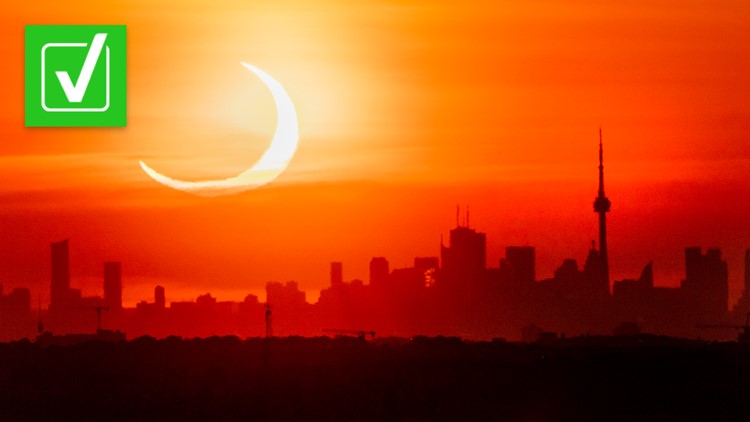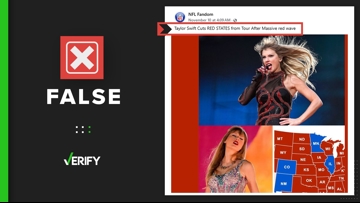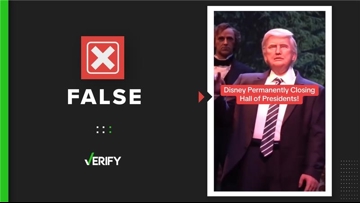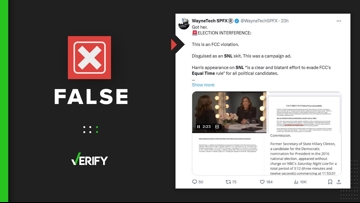Parts of the eastern United States and midwest woke up to a solar eclipse at sunrise on June 10 with notably less fanfare than the total solar eclipse that moved across the United States in 2017.
If the eclipse snuck past your radar this week, you weren’t alone. Music artist Bonnie Tyler, most well-known for her 1983 song "Total Eclipse of the Heart," only learned about the eclipse because of a spike in her notifications.
THE QUESTION
Is there a spike in interest in "Total Eclipse of the Heart" whenever there’s a solar eclipse?
THE SOURCES
THE ANSWER
Yes. In fact, Google Trends data show that the song reaches its peak during the hour the eclipse is most visible.
WHAT WE FOUND
Google Trends data show that "Total Eclipse of the Heart" receives a spike in search interest in the United States whenever a solar eclipse is visible in large parts of the country. The largest spike was in August 2017 when a total solar eclipse moved across the United States.
The song’s relationship with real life eclipses is even more apparent in a more detailed Google Trends graph showing the song’s search interest over the past week. The song reached its peak interest at 6 a.m. Eastern time, when the eclipse was most visible.
So people search for the song during the eclipse, but are they actually listening to it? At least on YouTube, they are.
Google Trends’ YouTube data show the song reaches the peak of its attention during solar eclipses. And the YouTube data from the past week also mirror Google data — 6 a.m. was the exact time the song was most popular.
The song didn't quite reach the high during this eclipse to crack Spotify's and iTunes' daily charts. It failed to make Spotify's daily Top 200 or Viral 50 for June 20, 2021. It didn't make it into the top 100 on an iTunes daily top 100 chart archiver, either. But it's reached those peaks on eclipse days before.
On August 21, 2017, the exact date of the 2017 eclipse, "Total Eclipse of the Heart" made it to 173 in Spotify’s global daily top 200 and made it to 63 just in the United States. It was the 37th most viral song globally that day and the fourth most viral song in the United States. There are no iTunes charts archived for that day.
These spikes come despite "Total Eclipse of the Heart" not quite fitting this specific eclipse perfectly. NASA describes this eclipse as an annular eclipse, which is an eclipse that occurs when the moon doesn’t appear large enough to block out the sun entirely and so a bright ring forms around the edges of the moon.
NASA says this happens when the moon is further from the Earth than it is during a total eclipse. Many people who viewed the eclipse in the United States probably saw what’s called a partial eclipse, which is when only part of the sun gets covered up by the moon. This happens for anyone viewing the eclipse outside the path of the moon’s shadow.
And, in case you’re curious, Google Trends shows Carly Simon’s "You’re So Vain," which includes the lyrics “you flew your Lear jet up to Nova Scotia to see the total eclipse of the sun,” also reached peak interest in August 2017 during that solar eclipse.
But "You’re So Vain" wasn’t nearly as popular during this solar eclipse, except to the people watching it from Nova Scotia.
More from VERIFY: Yes, we've seen tropical storms named Ana before
VERIFY
Our journalists work to separate fact from fiction so that you can understand what is true and false online. Please consider subscribing to our daily newsletter, text alerts and our YouTube channel. You can also follow us on Snapchat, Twitter, Instagram or Facebook.













